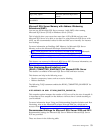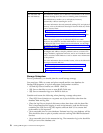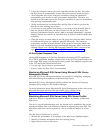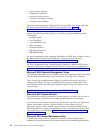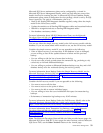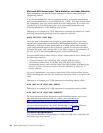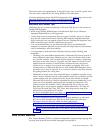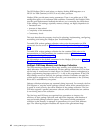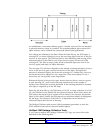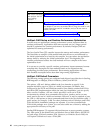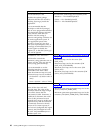
This helps reduce the fragmentation in the SQL Server files at the file system level.
You can create a schedule for this using Windows Task Scheduler.
For more information about the Disk Defragmenter Tools and Settings, refer to the
Microsoft TechNet Web site, which can be accessed from: http://
technet.microsoft.com/en-us/library/cc784391(WS.10).aspx.
Microsoft SQL Server Tips
Additional tips are provided pertaining to Microsoft SQL Server in the context of
Sterling B2B Integrator.
v When using Sterling B2B Integrator with Microsoft SQL Server, Windows
Integrated authentication is not supported.
v Ensure that network components such as routers, firewalls, and so on, do not
drop the idle connections between Sterling B2B Integrator and Microsoft SQL
Server where they are on separate physical servers. Sterling B2B Integrator uses
JDBC connection pool, and idle connections are typical.
v It is recommended that you run Microsoft SQL Server and Sterling B2B
Integrator on separate physical servers because this helps improve performance,
ease of maintenance, and recoverability.
v It is important to understand the difference between simple blocking and
deadlocks:
– Blocking is an unavoidable characteristic of Microsoft SQL Server because it
uses lock-based concurrency. Blocking occurs when one session holds a lock
on a specific resource, and a second session attempts to acquire a conflicting
lock type on the same resource. Typically, the time frame for which the first
session locks the resource is small. When it releases the lock, the second
session is free to acquire its own lock and continue processing. This is the
normal behavior of Microsoft SQL Server with Sterling B2B Integrator, and is
generally not a cause for concern. It is a cause for concern only when sessions
are getting blocked for a long time.
– Deadlocks are much worse than simple blocking. A deadlock typically occurs
when a session locks the resources that another session has to modify, and the
second session locks the resources that the first session intends to modify.
Microsoft SQL Server has a built-in algorithm for resolving deadlocks. It will
select one of the deadlock participants and roll back its transaction. This
session becomes the deadlock victim. Microsoft SQL Server has two trace
flags that can be set to capture deadlock-related information. The flags are
Trace Flag 1204 and Trace Flag 1222. These trace flags can be used as an
alternative to using SQL Server Profiler.
For more information about trace flags, see https://msdn.microsoft.com/en-
us/library/ms188396%28v=sql.105%29.aspx
For more information about Detecting and Ending Deadlocks in Microsoft
SQL Server 2005 and Microsoft SQL Server 2008, refer to the Microsoft
Developer Network Web site, which can be accessed from:
http://msdn.microsoft.com/en-us/library/ms178104(SQL.90).aspx.
In Microsoft SQL Server 2012, the System Health session detects deadlocks.
See https://technet.microsoft.com/en-us/library/ff877955%28v=sql.110
%29.aspx for more information.
Java Virtual Machine
Java Virtual Machine (JVM) is a platform-independent programming language that
converts Java bytecode into machine language and executes it.
Performance Management 61



